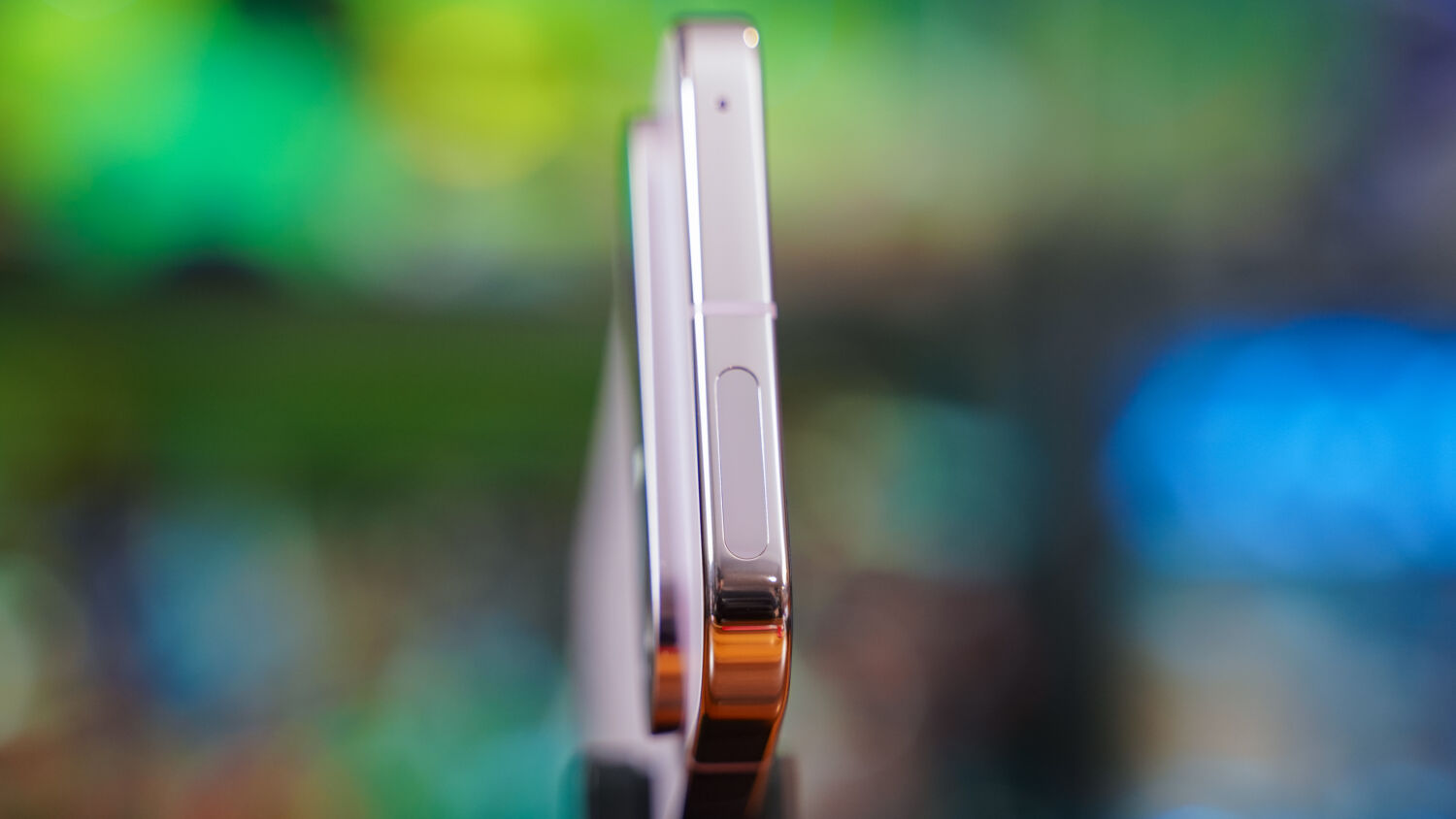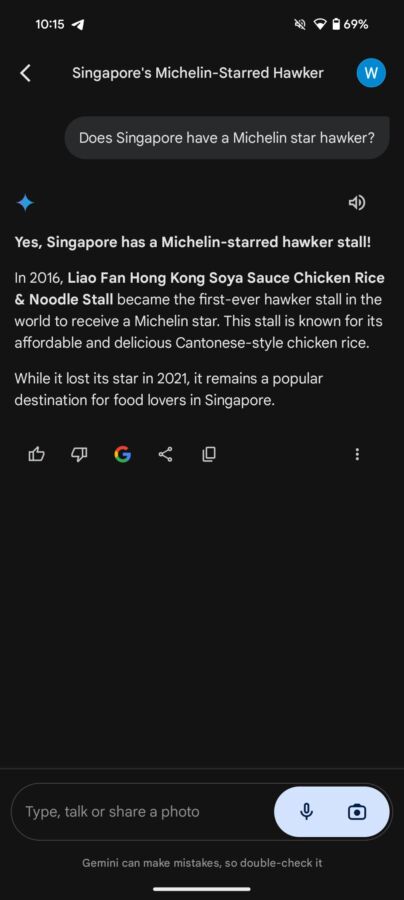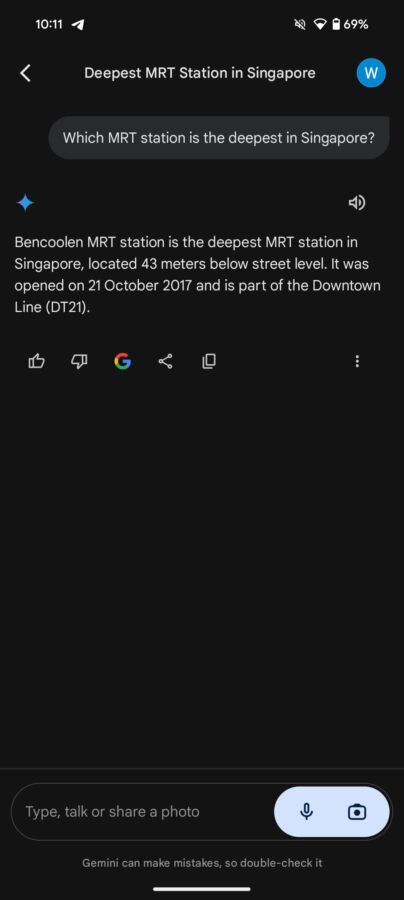Looks don’t always matter, but when they do, they go a long way in cementing a design identity. For the Google Pixel series, the signature flair in recent iterations has always been the camera visor on its rear – until its latest-gen addition, that is. The Google Pixel 9 lineup, comprising a base model and two Pro iterations for the first time, represents a departure from the formula, eschewing the instantly recognisable edge-to-edge bar for a bold pill-shaped cutout.

As part of the refreshed roster, the 6.8-inch Google Pixel 9 Pro XL bears this mark of change. The new look brings an elevated premium touch, oozing sleek sophistication that feels right at home with its minimalist, frills-free aesthetic. The ‘G’ logo on the rear remains unchanged, though other smaller tweaks lean more into the Apple playbook: a flatter form, more rounded edges, and tighter side rails. It’s a handsome, clean-cut charmer, and the lack of a wobble when placed flat on a surface certainly helps its case, even if the slight loss in identity does come as a pity.
Pairing a silky matte glass back with an aluminium frame, the handset stays free of grease and fingerprints. However, the polished metal on its sides and glossy edges attract smudges easily, with the combined frame adding some heft to the overall build. The Google Pixel 9 Pro XL tips the scales at 221 grams, the same as last year’s iPhone 15 Pro Max and the heaviest in the lineup to date, so loyalists may take some time to adjust. It does feel comfortable in the hand, since the weight distribution is skewed towards the bottom half, and the package includes a matching case that offers extra grip for those who need it.


Sitting on the phone’s right edge are the volume rocker and power button, which are responsive to the touch, if a bit stiff. A USB-C port and a SIM tray card can be found on the base, bringing support for one physical SIM and one eSIM – a welcome addition for frequent travellers. Four colour options are available here: Hazel (grey/green), Obsidian (black), Porcelain (white), and Rose Quartz (Pink), with the 6.3-inch Pixel 9 Pro presenting an alternative for those seeking a smaller footprint and extra oomph lacking in the base model.
Size aside though, there is little internal hardware difference between the two. Both Pro iterations pack the upgraded Tensor G4 chip, a Mali-G715 GPU, identical camera systems, and the exact RAM and storage configurations. Even the display type is the same, boasting the company’s Super Actua LTPO OLED technology, a 120Hz refresh rate, and a peak brightness of 3,000 nits. The 6.8-inch panel on the Google Pixel 9 Pro XL is slightly bigger than the Pixel 8 Pro (6.7 inches), beating out last year’s flagship with a 0.5-inch display increase and a resolution of 2,992 x 1,344 pixels.

As expected of a flagship device, the viewing experience proves to be highly enjoyable. Colours are striking and natural-looking, accompanied by deep blacks, strong contrast, and smooth visuals – be it watching movie trailers or X-Men ‘97 on Disney+. Users can also expect good viewing angles, though the lack of anti-glare tech means more reflections in brighter environments, such as under direct sunlight in hot, sunny Singapore.
In terms of day-to-day functionality, the Google Pixel 9 Pro XL delivers snappy performance across app-switching, social media use, texting, replying to emails, and other general tasks. Traditionally, the Tensor processors are known to fall behind Qualcomm’s equivalent chipsets when it comes to raw power, and the numbers suggest the same here.
The difference is most apparent in mobile titles like Honkai: Star Rail or PUBG Mobile, where graphical settings have to be dialled back for fluid and responsive gameplay. Thermal management, however, proves to be a pleasant surprise as the handset runs cool even under heavy loads, suggesting improved optimisation with 16GB of RAM (versus 12GB on the base model).
A defining characteristic of the series has always been its photography prowess, and this year’s iteration continues to honour the tradition. The Google Pixel 9 Pro XL houses a triple-camera setup comprising a 50-megapixel (MP) wide shooter, a 48MP ultrawide sensor, and a 48MP telephoto camera with 5x optical zoom and 30x Super Res Zoom – nearly identical to its predecessor’s system. Instead, it’s the front camera that clocks the biggest leap in advancement, going from 10.5MP to a generous 42MP with a wider angle view. Looking good won’t be an issue, even if selfies can sometimes produce an over-sharpened effect due to image processing.


The device further cements itself as a reliable and solid everyday-carry when spurred into action. Images often retain great detail, with accurate, punchy colours accompanying well-balanced contrast levels and a fast shutter. Night shots can occasionally be inconsistent, revealing splotchy areas and muddied elements, but are decent enough to get a pass.












Alas, the macro functionality falls short of expectations. Lacking polish and sharpness, close-up images make for a rough sight at times, with imprecise subject separation leading to blurring errors around the edges. While the Google Pixel 9 Pro is well-suited for casual photographers, these slight missteps may not sit well with more serious enthusiasts, especially since there are more value picks on the market that promise better performance. The latest-gen member is certainly no slouch by any means, but still has some ways to go before reaching the standards of its Chinese counterparts like Oppo and Xiaomi, both mobile photography heavyweights in their own right.






Naturally, artificial intelligence (AI) is at the forefront of user experience. The tech giant’s latest flagship builds on traces of magic from the Pixel 8 Pro, such as object removal and Best Take in photo taking, to deliver a suite of AI-powered capabilities – some more useful than others. For starters, Google’s Gemini Advanced has grown from being a basic AI assistant to a beefed-up personal helper that can execute various complex tasks, including following nuanced instructions, coding, logical reasoning, and more.
Gemini Live adds a conversational touch, allowing users to interact with the AI in a more natural way. Essentially, this means they are able to interrupt the flow of information by asking follow-up questions or even ask unintentionally absurd queries, which can yield amusing results. The feature is a hit-or-miss, however, as misinformation or contradictory findings still pop up more regularly than one would expect. For instance, Gemini correctly listed the badminton players who represented Singapore at the 2024 Olympics, but stated that local hawkers “do not receive Michelin stars” despite giving the following response to a prompt about crowned hawker stalls in the country:


“In 2016, Liao Fan Hong Kong Soya Sauce Chicken Rice & Noodle Stall became the first-ever hawker stall in the world to receive a Micheline star. This stall is known for its affordable and delicious Cantonese-style chicken rice. While it lost its star in 2021, it remains a popular destination for food lovers in Singapore.”
Certainly, the ability to clarify and ask follow-up questions does make the process more intuitive than before, but there’s still a strong reliance on contextual terminology or keywords. In another example, Gemini was able to recognise Bencoolen as the deepest MRT station in Singapore, and that’s only because the descriptor proved more specific than other lexicon holding similar connotations, such as “tallest” or “highest”.


Rather unsurprisingly, admin tasks make better use of AI talents, as the AI tool turns menial work, like itinerary planning or gathering recommendation picks into a straightforward, fuss-free affair, cutting down on research time and increasing efficiency. Again, the pitfalls will kick into effect here – namely outdated information – but it’s always easier to work off a base than an empty slate.
All things considered, it’s a good move on Google’s part to bundle in a complimentary one-year subscription to Gemini Advanced for its Pixel 9 Pro models. In a typical scenario, the premium service charges an extra of US$20 per month, which at this stage, doesn’t feel quite worthwhile since more refinement is needed. There won’t be support for offline use either, as it relies on Internet connection to function.
The AI prowess spills over to imaging and photography functionality as well, bearing the same inconsistent notes. Add Me, touted as the marquee entry, allows users to combine two separate photos in one group shot, such that the designated photographer(s) can be part of the picture. It’s a neat feature that comes with clear, detailed instructions for setting up both shots through augmented reality.



The feature works best in well-lit conditions and with consistent posing in between frames, requiring some getting used to. At its best, Add Me is able to insert subjects seamlessly and realistically into the scene; otherwise, expect to catch some perspective-scaling errors, marred edges, or blotchy and overlapping elements. Zooming in also reveals fuzzy details and a lack of sharpness.
Likewise, Magic Editor has its own share of new features. Auto Frame automatically zooms in or out to reframe an existing image, and uses AI to fill in the blank spaces in a way that’s similiar to the Generative Fill feature in Adobe Photoshop. As is often the case with AI-generated images, there’s bound to be some weird and unnatural traces.

The other new addition is Reimagine, serving more as a fun gimmick than a functional tool. Instead of simply removing subjects or moving elements around, it invites users to select part of a visual and add some modifications by entering a text prompt. Reimagine works to great effect, sacrificing realism to produce a stylised effect, and can be a little bit of an overkill for those seeking minor edits.
Additionally, the Google Pixel 9 Pro XL comes with two new preinstalled apps – Pixel Studio and Pixel Screenshots. The former generates images through a prompt, which are then presented in various predetermined styles, including “3D cartoon”, “video game” and “cinematic”, while the latter leverages AI to gather information from screenshots and annotate them with metadata for easy retrieval. It’s particularly handy for individuals who don’t usually organise their content (guilty as charged), saving them the hassle of sifting through the clutter.
Across the board, the AI suite still feels rough around the edges. Some features are nifty, others flashy, but there isn’t really a good balance between the two as the technology continues to mature. It may be better to hold off on these AI upgrades until there’s more polish, especially since the hardware is already impressive enough to cover all non-AI-related bases.

The Google Pixel 9 Pro XL packs decent battery life, at least. Equipped with a 5,060mAh cell, it can power through a typical nine-to-five workday with juice to spare on heavy use – so long as gaming is left out of the equation. Honkai: Star Rail drained its tank a lot more quickly than say, doing a simple edit on Capcut, which makes it unsuitable for prolonged periods under duress. Quick charging is supported, but Google has curiously left a fast-charge cable out of the box.
At a starting price of S$1,599, Google’s biggest flagship is hardly the wallet-friendly pick it was before. The sticker bump is justified, however, when users take into account the reliable day-to-day performance, the improved battery life, and the highly competent camera system. AI remains its weakest link, but the phone’s greatest enemy is itself – the ‘Pro XL’ nomenclature is supposed to offer all the bells and whistles that are lacking in the less powerful models; yet, they aren’t impressive enough to stand on their own.

Not to mention, there’s not a big jump in performance between the two Pro iterations, which begets the question: why pay more when you can get almost the same value? For those who are taken in by the Google Pixel 9 Pro XL’s allure nonetheless, the compact powerhouse promises to impress with some party tricks.
GEEK REVIEW SCORE
Summary
The Google 9 Pro XL improves on the nitty-gritty to deliver delightful hardware and photography oomph, even if its overall appeal is diminished by the awkward naming disconnect and inconsistent AI offerings.
Overall
8/10-
Aesthetics - 9/10
9/10
-
Build Quality - 8/10
8/10
-
Performance - 7.5/10
7.5/10
-
Value - 7.5/10
7.5/10
-
Geek Satisfaction - 8/10
8/10












